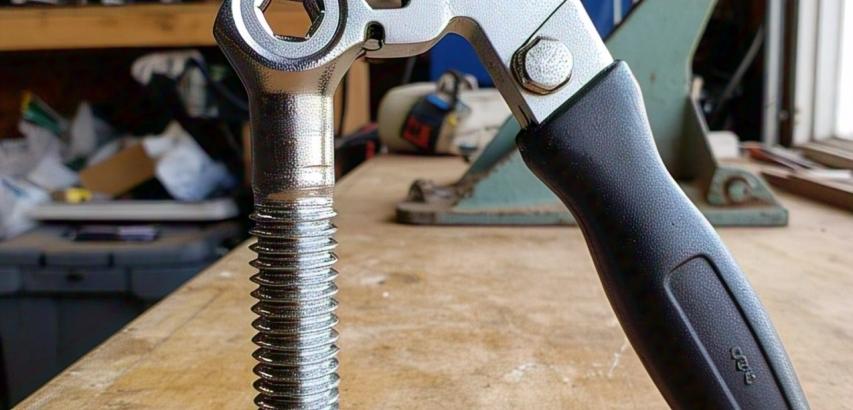In industries, engineering, carpentry, and mechanics, workers often encounter challenges in removing large screws that are stuck due to rust, wear, or excessive tightening. This is where a large screw remover becomes essential, providing an effective and safe way to extract stuck screws without damaging surrounding materials.
What is a Large Screw Remover?
A large screw remover is a mechanical or electric tool specifically designed to extract oversized and tightly fixed screws. It operates using various techniques such as reverse drilling, strong gripping, or high-torque rotation to ensure smooth screw removal.
Types of Large Screw Removers
Manual Tools:
Conical Screw Extractor: Drills into the stuck screw and removes it by reverse rotation.
Strong Grip Pliers: Ideal for exposed screws that can be firmly gripped and pulled out.
Electric Tools:
Power Drill with Extractor Bits: Drills into the screw and extracts it easily.
High-Torque Electric Screwdriver: Loosens large screws without damaging them.
Hydraulic Pressure Tools:
Used in heavy industries to extract extremely large screws that cannot be removed by traditional methods.
Key Benefits and Features
✔ Effortless Screw Removal:
Helps in extracting screws that are rusted, damaged, or overtightened with minimal manual effort.
✔ Protects Surrounding Surfaces:
Removes screws without damaging metal, wood, or plastic surfaces, making it ideal for precision work.
✔ Saves Time and Effort:
Reduces the need for repeated attempts and ineffective tools, increasing productivity in workshops and construction sites.
✔ Versatile Applications:
Suitable for mechanical, carpentry, plumbing, and home repairs.
✔ Available in Different Sizes:
Comes in multiple sizes and designs to handle all types of large screws, from industrial bolts to heavy-duty fasteners.
How to Use a Large Screw Remover?
Identify the Screw Type:
If the screw head is broken, use a drill extractor to create a hole for removal.
If the screw is partially exposed, use grip pliers or a wrench for extraction.
Select the Right Tool:
Use a manual tool for screws that can still be gripped.
Use a power drill or electric extractor for deeply embedded or damaged screws.
Apply Proper Force:
Maintain steady and balanced pressure to prevent breaking the screw during removal.
Remove the Screw Smoothly:
If using a reverse drill, rotate it counterclockwise to smoothly pull out the screw.
Common Applications
🔹 Maintenance and Repairs:
Fixing machines, engines, and industrial equipment.
Removing rusted or broken screws in workshops.
🔹 Construction and Carpentry:
Extracting screws from wooden panels, metal structures, and furniture.
Dismantling frames, panels, and installations.
🔹 Automotive and Mechanical Engineering:
Removing stuck screws in vehicle engines, motorcycles, and agricultural machines.
Loosening bolts in machinery and mechanical assemblies.
The large screw remover is an essential tool for anyone facing difficulty in removing stubborn screws. With its intelligent design and modern technology, this tool provides efficiency, precision, and speed, making it a must-have for workshops, factories, and construction sites. Whether you're a professional or a DIY enthusiast, a large screw remover will help you complete tasks with ease and safety. 🚀
 |  |  |
